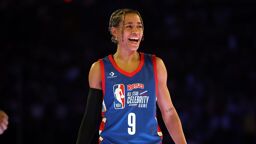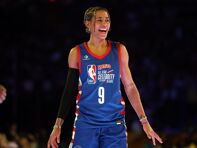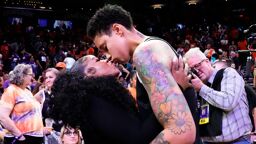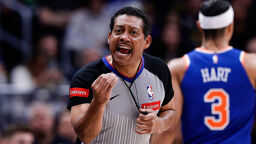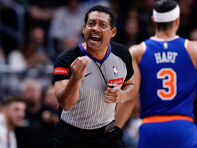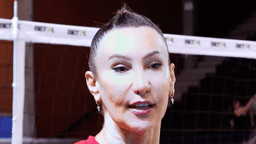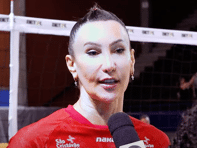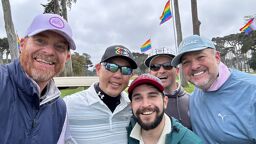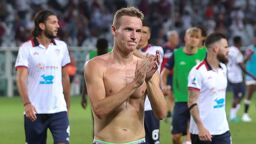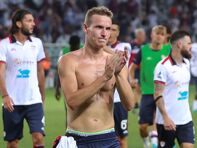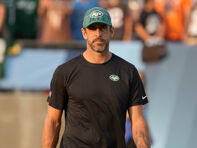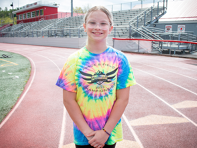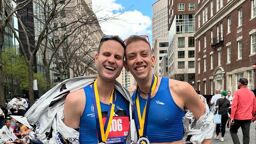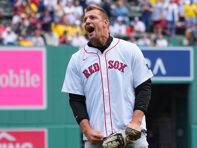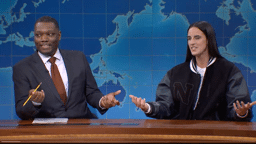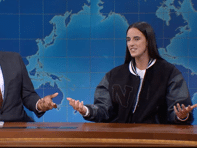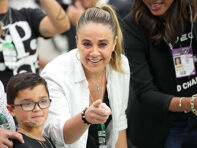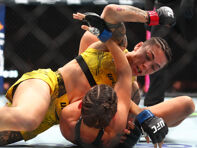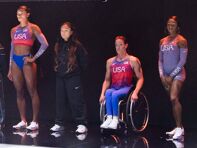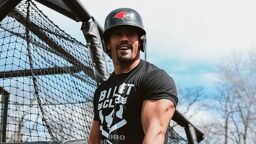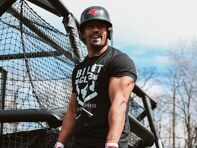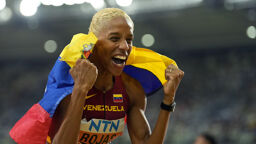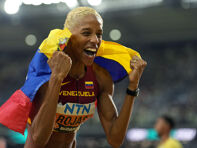(This article was published in 2000).
By: Michael Muska
From the Chronicle of Higher Education (reprinted with permission by Michael Muska)
t was just over two years ago that The Chronicle “outed” me. Give the folks there credit for getting the scoop, but I had decidedly mixed feelings about it. A Chronicle reporter had been talking to a former Oberlin College employee and had been told: “Oberlin is so liberal, they just hired a gay male athletic director.”
Unaware of what had happened, I was caught by surprise when, days later, the phone started ringing with friends in academe calling to tell me they had just read on The Chronicle’s Web site that I was believed to be the first openly gay athletics director in the United States. “Way to go,” they cheered. The quiet way that I had hoped to arrive on the Oberlin campus was pretty much laid to rest, and any desire to just get to work, do a good job, and gain respect regardless of my sexual orientation was by then a moot point. What was relevant in my biography was not that I had coached 20 Division I all-Americans over my career, or that I had twice been named coach of the year in the Southeastern Conference and once in the Big Ten Conference. What mattered was that I was gay.
My experiences, both before and after I was hired by Oberlin, have convinced me that we’ve reached a crucial juncture in higher education: It’s time to back up our words with deeds, and to create a safe and welcoming environment for all people on campuses.
Not that I hadn’t dealt with it all before I went to Oberlin, and not that I didn’t share in the blame for being visible. When I was associate director of admissions and assistant athletics director at Brown University, in the early 1990’s, I was the one in the coat and tie in the newspaper photograph, representing Rhode Island ACT UP and talking to the governor of the state and the mayor of Providence about a proposed gay-rights bill.
Then, in 1994, while I was a college counselor at the Phillips Academy, in Andover, Mass., I was the first faculty liaison for gay, lesbian, and bisexual issues — the first paid position of its kind at an independent school. Part of the attraction of hiring me at the Milton Academy was the need for a faculty adviser for the student group GASP (Gay And Straight People). My mother just couldn’t understand it when I told her that being gay had actually helped me land jobs.
But, initially, I hadn’t planned to be so brave at Oberlin. There was no mention of my “gay past” in my resume, and friends and colleagues all cautioned me not to raise the issue in my first interview. Walking away from college athletics 10 years earlier had been the right thing for me at the time. I had needed a chance to get on with a personal life, and to get out of the collegiate-athletics closet. Andover and Milton were liberal places, and I had felt an ease in being out in athletics that I had never felt at the college level. I’d stayed out of the school locker rooms, because the kids knew I was gay, but no one had seemed uncomfortable with me. I remember a day at Andover when a student was asked at track practice whether he was running without a shirt to impress the women on the team. He paused, smiled, and then said: “No, the coach.” College sports isn’t usually conducive to that kind of comfort and maturity.
But I felt something like it when I visited Oberlin, and I decided not to heed any advice about keeping mum. Members of the search committee were wrapping up Round 1 of my interview — they’d just finished asking how I would handle a dispute between a coach and a student with green hair — and they inquired if I wished to share anything else with them. So I dropped the bomb.
I looked around the room. No one fell out of a chair. No one tried to avoid me by looking the other way. For this was Oberlin, and nothing surprises people here. For a college that prides itself on firsts (the first truly coeducational institution in the United States, an early leader in the education of African-American students) and likes to set the tone for society, I seemed to be just another piece of its storied history.
I obviously didn’t scare people off, since I was invited back as a finalist for the job. With the search committee, I talked about strengthening the commitment to Title IX, adding softball, renovating an old field house, collaborating with the admissions office, and pursuing curricular reform, club sports, and fiscal responsibility.
But word of my revelation had leaked out, and I was met with hostility from several coaches I talked to and with curiosity from a number of students. Some coaches of men’s sports worried that my sexual orientation might reinforce Oberlin’s stereotype as a college for artists and musicians, with a significant gay population — an image that was making it hard to recruit male athletes. However, for many of the students, particularly the non-varsity types, the idea of a gay athletics director seemed to lend hope for an athletics program that might be more accepting of those other than hard-core jocks.
At my final meeting with the search committee, I walked in with a vision and a plan for the future, and a determination to prove that I was the best candidate for the job. We didn’t talk about my sexual orientation, but rather about what type of leadership I would bring to the department, and what else I would contribute to the college. I flew home, comforted that I had done my best, and left the process in Oberlin’s hands.
As the weeks dragged on, however, I began to worry. Before I had considered the Oberlin job, I had been planning to take a two-year leave of absence from Milton and to accept an appointment at the American School of London. All my friends said they would much rather visit me in England than Ohio. In my mind, I knew that I really wanted the challenge of the Oberlin job, but I increasingly regarded a leave in London as a way to soften the disappointment if I didn’t get the position.
Well, the call finally came, and I accepted. I was settling in for my final months at Milton when the Chronicle article appeared. Gay publications throughout the country ran the story, and word of Oberlin’s decision spread.
Influential alumni expressed their concern to the president. One tried to disguise his homophobia by first talking about his many gay friends. “But why do we have to hire a gay athletic director?” he then added. The college and I became targets of the infamous homophobe and antigay crusader Fred Phelps, who promised to be on hand to greet new students and me in the fall.
I was quoted in USA Today, asked to join Billie Jean King on a panel sponsored by the National Gay and Lesbian Task Force, and featured on one of the segments of ESPN’s Outside the Lines.
The Chronicle article brought me unwanted notoriety, but I have it to thank for something else. I started to receive e-mail messages and mail at Oberlin: letters and notes from closeted administrators and coaches (mostly female) throughout the country, and, even more meaningful to me, from current and former gay male athletes who represented almost every sport offered on college campuses. Most of the latter related their personal experiences as gay varsity athletes. There were a few happy stories, but many more told of being haunted by a fear of discovery, and of how that experience had affected them later in life. I realized how important it was for the athletes to share their stories.
The two years at Oberlin have flown by. In the process, I’ve come to feel even more strongly that we in college athletics need to come out of the closet in our support for gay athletes. Indeed, legislation recently passed by the National Collegiate Athletic Association urges us to do just that. Do we have the will?
As I go about my job at Oberlin, I’ve been too busy to worry about what people think about me. Although our men’s teams continue to struggle because the college has significantly more female than male students, there is light at the end of the tunnel for many of the men’s programs. (By the way, our women do just fine, so I’m not slighting them.) Football has brought in 30-plus recruits this fall, a number unheard of in recent Oberlin classes. Soccer and baseball are adding similar numbers, swimming features a returning N.C.A.A. champion, and tennis and cross-country programs are alive and well. New facilities have been built, programs have been added, and the climate for athletics and the support from the administration are generally positive.
But Oberlin still has an image to shake. Our football coach and his staff run into snide comments in recruiting. Our baseball team was derided by an opponent in western Pennsylvania last spring with words that included “fags” and “homos.” Our swim team has heard similar epithets in the locker room while visiting a conference opponent.
That’s why I want to call attention to last January’s vote at the N.C.A.A. convention, in San Diego, where sexual orientation was added to the nondiscrimination clause of the N.C.A.A. charter.
I sat quietly in the audience, as presidents, faculty representatives, and athletics directors passed the resolution by a voice vote, with no opposition. It was a special moment for me and many others in the audience.
But the resolution attracted little attention in the news media, and it was left to member institutions to determine how to put it into effect on their campuses. The recentcontroversy at the University of Hawaii-Manoa — where some staff members wanted to change the college’s team name from the Rainbows, because the word is widely used in the gay community and on gay flags — makes me wonder if we are, indeed, ready to do what the N.C.A.A. has charged us with doing.
Attitudes and perceptions about sexual orientation continue to change. Politicians address the issue, and both major political parties are sensitive to the voting bloc that the sexual minority represents. The gay presence in television, movies, and other media expands each year, and the popular comedy featuring gay men, Will & Grace, was nominated for more Emmys in the 1999-2000 season than any other show in its category. Dawson’s Creek actually ran an episode last fall about a high-school football team that rallied around a gay player.
The episode was later echoed by the real-life story of Corey Johnson, an openly gay high-school football player in Massachusetts; but it contrasted sharply with the sad story of Greg Congdon, the gay Pennsylvania teenager who had been driven by intolerance and a lack of support to attempt suicide. The juxtaposition of the real stories should remind us just how unsettled the current situation is for gay athletes.
When I visit schools and colleges to run workshops on sexual orientation, I always say that, gay or straight, we each have a timetable in life. There are moments in our lives when we make decisions about what our next important steps will be. For those of us who are gay, a major event on this timetable is when we come out, when we let the world know who we really are. For many students, that now happens during the high-school years. While the vote at the N.C.A.A. convention did not directly relate to high schools, it sent people at all levels of education the message that we all must create safe spaces for students who are confronting their own sexuality.
For students who wrestle with the issue in college, the N.C.A.A. vote should make it clear to coaches, athletics directors, and administrators that we do want to stand behind our gay athletes, and that we oppose discrimination of any form. The question is: How long will it take colleges and universities to comply?
When I did the show for ESPN a year ago, one of the producers shared with me that, had she so desired, she could have outed significant numbers of gay professional athletes. The dearth of gay role models in professional sports is something that I hope will change in the years ahead. I can only dream of the day when, as more gay college athletes gain the courage to come out, professional teams will find themselves forced to draft and sign outstanding, openly gay prospects.
I have a vision: that our college programs can become shining examples of what breaking down intolerance is all about. I’ve had several calls from colleges across the country where people are seeking help in dealing with homophobia in their athletics programs. Those calls, and the visits I’ve made to some other campuses, give me the sense that the climate is changing — though more slowly than I might have hoped in the wake of the January N.C.A.A. vote.
So what can we do? A new school year and new students provide the opportunity to start anew. Sensitivity training for staff members would help. So would open discussions with our athletes, as well as campus visits by former athletes who came out after graduating (we all have them). When I visit schools and colleges, I ask people to take part in two role-playing scenarios. First, I say, imagine that the whole world is gay, and that you, a straight person, are the exception. How would you view the world differently? How would you feel in situations that a gay person faces repeatedly in today’s society? Next, I ask people to pair off and enact the scene of a gay person coming out to a straight person. Then I ask both to share their thoughts and emotions. It’s always a powerful moment when each person realizes how difficult it is for the other.
We need to realize that the words many people in athletics, especially in men’s athletics, have used in the past to define weakness — calling players “sissies” or “limp wrists,” telling them that they play like girls or even like faggots — may strike fear in that student who’s sitting quietly in front of his locker.
A recent article in the N.C.A.A.’s newsletter reminds us that those issues affect female as well as male athletes. Written by a former women’s-basketball player who now works at a Midwestern college, the article pointed out that female athletes may be more trusting of each other than male athletes, but they still have good reason to be leery of administrators who publicly deny that they have lesbians in their programs. And while there may be more gay role models among professional female athletes than among the men, the personal courage of those women has cost them significant endorsement opportunities. I believe that Oberlin athletes know they can always come to me with problems or concerns about comments or actions directed at them, whether on our campus or elsewhere. We all need to create such a space on our campuses.
A year ago, I visited an athletics director at a college in our conference, and noticed a triangle on his bulletin board with the words “safe zone” printed inside. A little gesture, perhaps, but a welcome message to his students and staff members that it is safe to talk about issues of sexual orientation in his office.
It is our duty to provide programs that are safe and welcoming for all students. To do anything less violates our responsibility as educators. Two years ago, I was dismayed when The Chronicle outed me. But I have come to realize that my own words and actions matter to people, here at Oberlin and beyond. What we say in public sends a powerful message. May all of us remember that.
Michael Muska is the athletics director at Oberlin College. You can e-mail him with any questions and comments.
Chronicle of Higher Education,
October 13, 2000 1255 23rd Street, N.W., Washington, D.C. 20037
http://www.chronicle.com/



